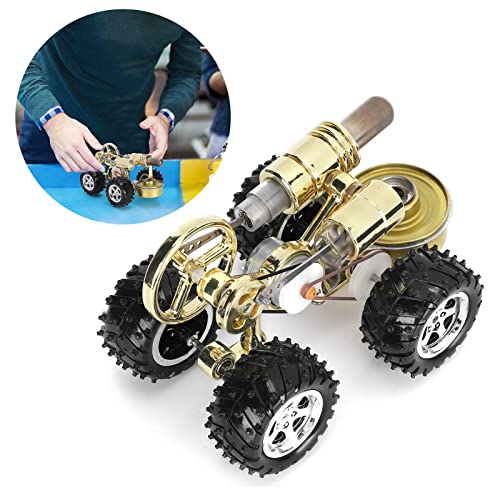- Joined
- Jul 16, 2007
- Messages
- 3,072
- Reaction score
- 1,212
Years ago I built this engine and due to circumstances at the time it was donated to the Craftsmanship Museum. I really missed having a radial in my collection so I started another one about a year and a half ago. I got pretty close to finishing it but the summer came along and most of the machining projects got put on hold. With the weather where I live turning cold it was time to get back to the build.
A little history of the build. While attending an old engine show many years ago a gentleman came up and looked at my engines and remarked that I didn't have a radial. He asked if I might like a set of drawings for one. Of course I took him up on his offer so he ran home and brought them back to the show. They happened to be a full set of Morton M5 drawings. The drawings sat for many years the I finally decided to pull them out and have a look. After some research and going over the drawings there quite a few things I didn't like so I set about redesigning it. The Morton, although a radial, isn't quite a conventional design. I speak about the cam design. I changed that along with the distributor and a pressure oil system.
On this new engine I eliminated the pressure oiling system and move the carb down to the bottom of the crankcase much like the Morton. This will necessitate mixing the fuel with oil but it should work fine. A lot of the Morton elements were retained like the bore and stroke but rather than a one piece cylinder and head with a liner I made a separate cylinder with a screw on head. My engine also has a Hall transistor type ignition and the distributor is moved the the vertical position.
The engine is complete and I just needed to build a fuel tank. I didn't give it a lot of thought at the time and found out that the fuel tank would interfere with the throttle shaft so a few modifications were needed. I only need to make a bracket to hold the throttle shaft and a coil wire then I should be able to see if it runs.
Attached are some pictures of the engine, base and fuel tank.
The prop is one I made for the original engine. The hub bolts together and the blades have a semi-circular ring machined on them that it clamped in place. The pitch can be changed by loosening the hub and twisting the blades to the required angle.
A little history of the build. While attending an old engine show many years ago a gentleman came up and looked at my engines and remarked that I didn't have a radial. He asked if I might like a set of drawings for one. Of course I took him up on his offer so he ran home and brought them back to the show. They happened to be a full set of Morton M5 drawings. The drawings sat for many years the I finally decided to pull them out and have a look. After some research and going over the drawings there quite a few things I didn't like so I set about redesigning it. The Morton, although a radial, isn't quite a conventional design. I speak about the cam design. I changed that along with the distributor and a pressure oil system.
On this new engine I eliminated the pressure oiling system and move the carb down to the bottom of the crankcase much like the Morton. This will necessitate mixing the fuel with oil but it should work fine. A lot of the Morton elements were retained like the bore and stroke but rather than a one piece cylinder and head with a liner I made a separate cylinder with a screw on head. My engine also has a Hall transistor type ignition and the distributor is moved the the vertical position.
The engine is complete and I just needed to build a fuel tank. I didn't give it a lot of thought at the time and found out that the fuel tank would interfere with the throttle shaft so a few modifications were needed. I only need to make a bracket to hold the throttle shaft and a coil wire then I should be able to see if it runs.
Attached are some pictures of the engine, base and fuel tank.
The prop is one I made for the original engine. The hub bolts together and the blades have a semi-circular ring machined on them that it clamped in place. The pitch can be changed by loosening the hub and twisting the blades to the required angle.

















































![DreamPlan Home Design and Landscaping Software Free for Windows [PC Download]](https://m.media-amazon.com/images/I/51kvZH2dVLL._SL500_.jpg)































![MeshMagic 3D Free 3D Modeling Software [Download]](https://m.media-amazon.com/images/I/B1U+p8ewjGS._SL500_.png)







